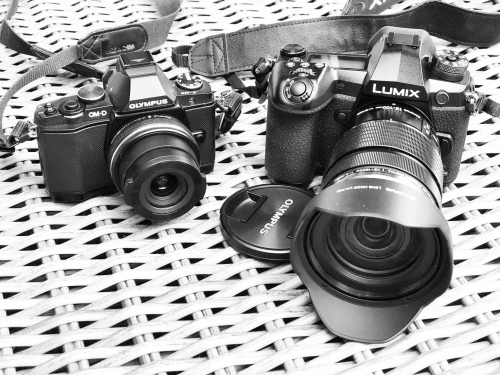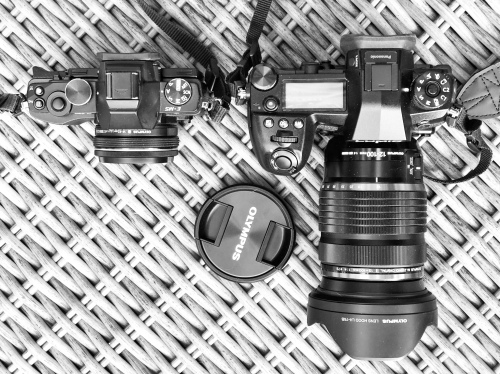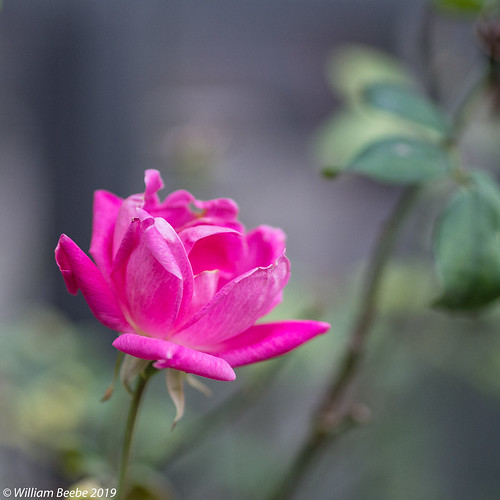
A little over two years ago I wrote a post titled “gear for the revolution” as a set of suggestions about what kind of camera to use for citizen reporting. Since that time a lot of water has flowed “under the bridge” to the point where I can’t support my suggestions in that original post. Here’s what features I would suggest you consider when selecting a camera other than the one that comes with your smartphone; size, autofocus speed and accuracy, and wireless communication between your camera and your smartphone.
- Think about size. The photo at the top shows the size difference between the original Olympus E-M5 next to the larger Panasonic G9. The size is further exaggerated between the two zooms. On the left is the Olympus 14-42mm EZ kit zoom, while the right is the Olympus 12-100mm f/4 PRO zoom. Both lenses are superb in broad daylight, and even morning and afternoon light (“blue” hour and “golden” hour, respectively), with the edge going to the PRO, as it should. And both are pretty quick to autofocus. But the Olympus with its EZ pancake zoom is far more discrete than the G9 with its 12-100mm zoom on the right. And with the E-M5 powered off, the pancake automatically collapses down to a very small size. Great for moving around quickly in a crowded situation when needs must.
- Which leads to autofocus speed. The original E-P2 can also use the EZ kit zoom, but it’s far slower to drive the zoom’s autofocus motors than the E-M5. Keep in mind that the E-P2, introduced November 2009, was only two-and-a-half years old when the E-M5 was introduced in February 2012. Yet in those two-and-a-half years tremendous advancements had taken place between the two, not the least of which was the efficiency and speed of autofocus. Thus, if deciding which camera to own, assuming that both are used and everything else being fairly equal, I’d recommend the E-M5 hands down over the E-P2 because of the drastic improvement over autofocus speed and accuracy in the E-M5.
- As good as the E-M5 still is, it lacks one critical feature that is available in the G9, and a number of other micro four thirds cameras from Olympus and Panasonic, such as all versions of the Olympus E-M10, the Panasonic GX85, the Olympus E-M5 Mark II, and of course the Panasonic G7, G8, and G9: wireless connectivity with either an iOS or Android app, allowing your smartphone to wirelessly transfer photos immediately from the camera to the smartphone.
There will always be many other issues to consider, not the least of which is cost. When your resources are constrained you have to make some hard choices as to what you can afford, even when considering used equipment.
Right now, for example, the best new micro four thirds camera bargain on the market is the Panasonic GX85 with a Lumix 12-32mm pancake zoom and a Lumix 45-150mm telephoto zoom. The whole kit, usually with a bag and memory card, can be had for US$490. That’s far cheaper than just about any other new camera. That camera is small, has marvelously fast and accurate autofocus, and can send photos to your smartphone of choice with the Panasonic Image App. The GX85 also has in-body image stabilization and can record 4K video (or lesser bit-rate; that keeps file sizes down and keeps from depleting the battery too quickly). It’s compact, easily transportable, pro-level image quality, and overall a great system to start with.
Of course, you can always stick with your smartphone. Nearly every mid-range Android phone as well as the Apple iPhones can record excellent stills and video. That keeps your expenses down to just having to pay for the phone and a data plan. But then you don’t get the benefits of the various focal lengths (12mm to 150mm) that the Panasonic system provides. Sometimes it’s good to have the ability to record an event from a distance with a long zoom.
Just remember, these illustrative photos were take with an iPhone 8 Plus and processed in Snapseed before being imported into my blog with the WordPress app.




You must be logged in to post a comment.